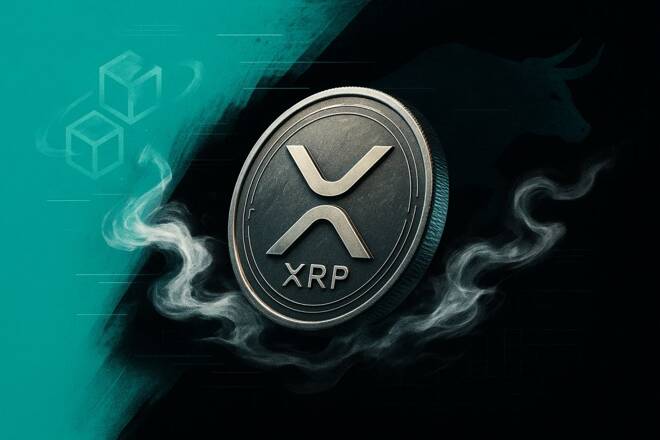In a remarkable turn for the cryptocurrency market, XRP has experienced a 100% surge in new user registrations, signaling renewed investor confidence and heightened market activity. This surge comes amid broader optimism in digital asset markets, driven by growing institutional interest, favorable regulatory developments, and the continued expansion of blockchain-based payment solutions. As XRP regains traction within the global financial ecosystem, analysts are assessing the underlying factors that triggered this wave of new entrants—and what it could mean for the cryptocurrency’s future valuation and adoption trajectory.
Renewed Investor Confidence and Market Dynamics
The recent doubling in XRP’s new user base underscores a significant revival in interest surrounding the digital asset. Market data suggests that the influx of new participants coincides with renewed optimism about Ripple’s expanding ecosystem and its ongoing integration into real-world financial applications.
Following years of legal uncertainty, XRP has regained credibility among investors, with several key jurisdictions showing increased openness toward blockchain-based remittance platforms. Analysts point to improved liquidity, robust exchange activity, and positive sentiment within the retail trading community as catalysts behind the recent user surge.
Additionally, broader crypto market recovery trends have played a role in reinforcing XRP’s momentum. As Bitcoin and Ethereum stabilize at higher price ranges, alternative assets like XRP are benefiting from the spillover of renewed capital inflows into the market.
Ripple’s Strategic Expansion and Institutional Partnerships
Ripple Labs, the company behind XRP, has been steadily fortifying its global network by forging partnerships with financial institutions and payment service providers. The company’s strategic focus on cross-border settlement solutions has positioned XRP as a viable bridge currency in global finance.
Recent developments include Ripple’s expansion into emerging markets across Asia, the Middle East, and Latin America—regions where remittance efficiency and transaction transparency remain high priorities. The integration of Ripple’s technology into banking and fintech infrastructure has amplified investor confidence, translating into greater adoption of XRP tokens by both retail and institutional users.
Industry experts also highlight Ripple’s consistent progress in securing regulatory clarity and obtaining operational licenses, which have collectively strengthened market perception and encouraged broader participation.
Regulatory Clarity and Market Legitimacy
One of the most decisive factors behind the recent spike is the gradual resolution of long-standing regulatory challenges. The legal clarity surrounding XRP’s classification as a digital asset rather than a security has revitalized investor enthusiasm, particularly in markets where compliance remains a key consideration.
This newfound clarity has enabled exchanges to relist XRP, boosting liquidity and accessibility for a global user base. The perception of XRP as a legitimate and compliant digital asset has contributed significantly to the doubling of new user registrations, especially among investors who previously avoided the asset due to regulatory uncertainty.
The Broader Crypto Market Effect
The timing of XRP’s resurgence aligns with an overall uptick in cryptocurrency adoption. As digital assets gain mainstream recognition and institutional portfolios increasingly incorporate crypto exposure, XRP’s established utility as a payment-oriented token makes it an attractive option for new entrants.
The global macroeconomic climate, characterized by interest rate adjustments and shifting investor appetite for alternative assets, has also played a role in pushing more individuals toward digital currencies. XRP’s cost efficiency, scalability, and established use cases continue to differentiate it in a market often driven by speculation.
Outlook: Sustaining the Momentum
While the 100% surge in new XRP users marks a significant milestone, analysts caution that sustaining this growth will depend on consistent market performance and continued regulatory stability. Ripple’s ongoing expansion into government-backed payment frameworks and its potential role in central bank digital currency (CBDC) initiatives could further elevate its market position.
In the medium term, the company’s focus on bridging traditional finance with blockchain innovation may cement XRP’s place as a cornerstone of cross-border payments. However, volatility and evolving global regulations remain key variables that could influence adoption trends.
Conclusion
The doubling of XRP’s new users reflects more than just market excitement—it signals a pivotal moment in the asset’s evolution from legal uncertainty to renewed legitimacy. With regulatory clarity, expanding institutional alliances, and a stronger global network, XRP is reasserting its relevance in the crypto economy. Whether this growth transforms into long-term adoption will depend on Ripple’s ability to maintain transparency, innovate within the payment sector, and navigate the complex landscape of global financial regulation.
